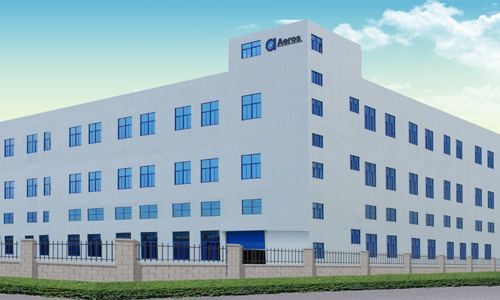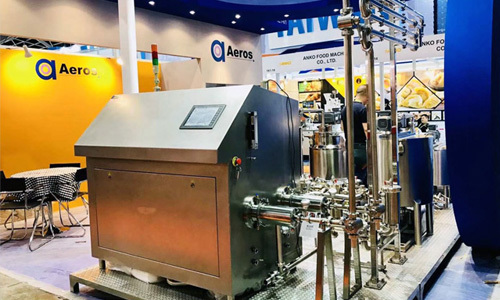Understanding the Role of Automatic Aeration Machines in Wastewater Treatment

2024/11/16
Automatic aeration machines play a crucial role in the field of wastewater treatment, particularly when it comes to enhancing the efficiency of aeration processes. These machines are designed to optimize the oxygen transfer in water, which is essential for the aerobic biological treatment of wastewater. By ensuring a consistent supply of oxygen, automatic aeration machines facilitate the breakdown of organic matter in sewage, helping to reduce pollution and improve water quality.
One of the primary benefits of automatic aeration machines is their ability to monitor and adjust oxygen levels in real time. This automation allows for a more precise control over the aeration process, reducing energy consumption and operational costs. Traditional aeration methods often rely on manual adjustments, which can lead to inefficiencies and inconsistent results. In contrast, automatic systems utilize sensors and control units to continuously measure the dissolved oxygen levels in the wastewater, automatically adjusting aeration rates to meet the biological demands of the microorganisms responsible for decomposition.
Moreover, the use of automatic aeration machines contributes to a more stable and optimal environment for microbial activity. By maintaining the appropriate oxygen levels, these machines enhance the growth and activity of aerobic bacteria, which are vital for the biological treatment processes. This results in faster degradation of pollutants, leading to more effective wastewater treatment and reduced time for treatment cycles.
In addition to improving treatment efficiency, automatic aeration machines also play a significant role in enhancing the overall sustainability of wastewater treatment facilities. By optimizing energy usage and reducing the need for manual intervention, these systems contribute to lower operational costs and a decreased environmental footprint. This aligns with the growing emphasis on environmentally-friendly practices in industrial processes.
Furthermore, the integration of automatic aeration machines in wastewater treatment systems can lead to higher compliance with environmental regulations. With stringent guidelines governing the discharge of treated wastewater, maintaining effective aeration becomes crucial for meeting these standards. The reliability and precision of automatic systems ensure that treatment processes remain effective, thus helping facilities avoid potential fines and contribute positively to environmental conservation efforts.
In summary, automatic aeration machines are essential assets in the wastewater treatment industry. Their ability to automate oxygen delivery, improve microbial activity, and enhance overall treatment efficiency makes them invaluable in modern wastewater management. As industries continue to seek sustainable solutions, the adoption of automatic aeration technology is likely to increase, paving the way for more efficient and environmentally friendly wastewater treatment processes.
One of the primary benefits of automatic aeration machines is their ability to monitor and adjust oxygen levels in real time. This automation allows for a more precise control over the aeration process, reducing energy consumption and operational costs. Traditional aeration methods often rely on manual adjustments, which can lead to inefficiencies and inconsistent results. In contrast, automatic systems utilize sensors and control units to continuously measure the dissolved oxygen levels in the wastewater, automatically adjusting aeration rates to meet the biological demands of the microorganisms responsible for decomposition.
Moreover, the use of automatic aeration machines contributes to a more stable and optimal environment for microbial activity. By maintaining the appropriate oxygen levels, these machines enhance the growth and activity of aerobic bacteria, which are vital for the biological treatment processes. This results in faster degradation of pollutants, leading to more effective wastewater treatment and reduced time for treatment cycles.
In addition to improving treatment efficiency, automatic aeration machines also play a significant role in enhancing the overall sustainability of wastewater treatment facilities. By optimizing energy usage and reducing the need for manual intervention, these systems contribute to lower operational costs and a decreased environmental footprint. This aligns with the growing emphasis on environmentally-friendly practices in industrial processes.
Furthermore, the integration of automatic aeration machines in wastewater treatment systems can lead to higher compliance with environmental regulations. With stringent guidelines governing the discharge of treated wastewater, maintaining effective aeration becomes crucial for meeting these standards. The reliability and precision of automatic systems ensure that treatment processes remain effective, thus helping facilities avoid potential fines and contribute positively to environmental conservation efforts.
In summary, automatic aeration machines are essential assets in the wastewater treatment industry. Their ability to automate oxygen delivery, improve microbial activity, and enhance overall treatment efficiency makes them invaluable in modern wastewater management. As industries continue to seek sustainable solutions, the adoption of automatic aeration technology is likely to increase, paving the way for more efficient and environmentally friendly wastewater treatment processes.
Automatic aeration machine







